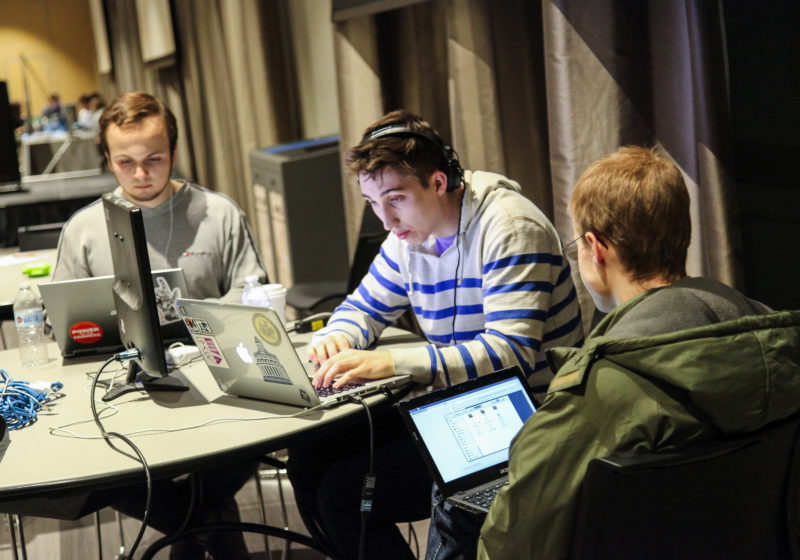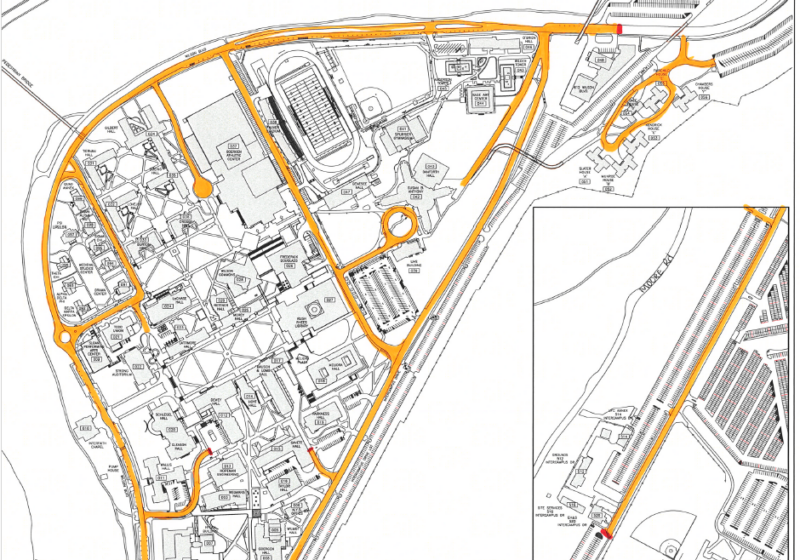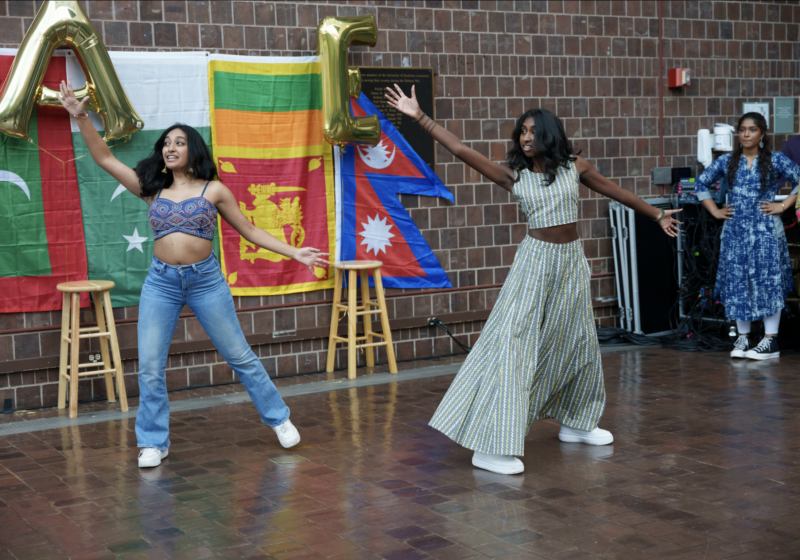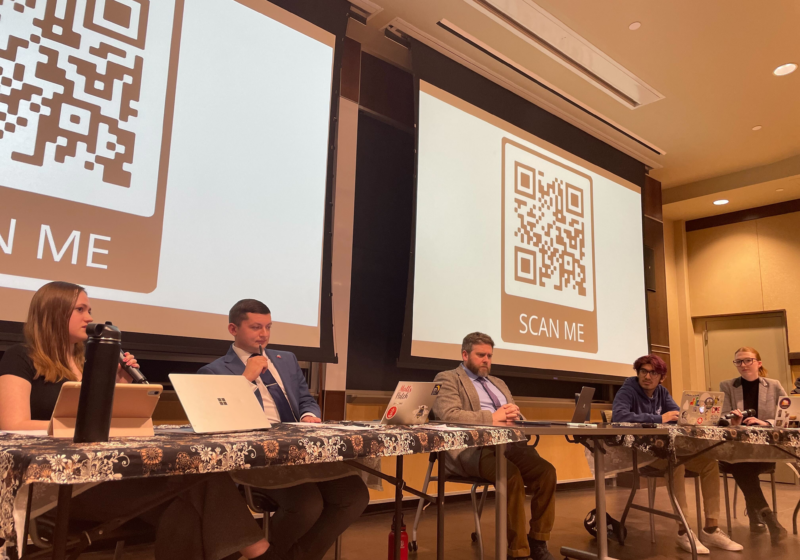Students clacked away at their keyboards, munching away on bananas and chips. For over a day, they had been working nearly non-stop in the Frederick Douglass Building with a single goal in mind: to wow a panel of judges with their creations at the end of the weekend.
That was the scene Saturday night in the Douglass Ballroom, as teams of students from five schools and two countries worked hard to complete their Dandyhacks projects for an 8 a.m. deadline.
Dandyhacks, UR’s hackathon run by the Computer Science Undergraduate Council, is now in its fourth year. In a hackathon, students form teams and spend about 36 hours developing an idea of theirs, usually through computer programming.
Senior Anis Kallel, one of the event’s organizers (another is senior Maggie Curtis, whom Kallel praised), explained that the goal of Dandyhacks is to have “something that is the intersection of computer science and data science.”
To emphasize this, several of the sponsors present over the weekend were three big data companies: 1010 Data, FactSet, and Google. Prizes were given out to several teams for use of data.
One such winner was Algebrissimo, the brainchild of RIT juniors Stefan Aleksie and Josh Miller.
The project—which took FactSet’s “Most Creative Data Visualization” award and second-place overall—was to create a program hosted on a website that allows users to perform computations with songs to discover new music that they might like. For example, a person may like a pop song but not its rap components, and so they could subtract the rap from the song to get a new song with just the features desired.
“I usually go to [hackathons] with the goal to meet people and learn new stuff,” Aleksie said. “But this time I really wanted to emphasize the learning part. Every single tech I’m using I’ve never used before.”
Not all projects were purely web-based. UR senior Adam Rosenstein and juniors Dominic Giambra and Unni Kurumbail spent the weekend developing an iPhone app to provide a quick preliminary stroke diagnosis. The project, which took third prize, was an idea suggested by UR Medical Center neurosurgeon Yan Li.
“Nowadays, with the way technology is changing, we have the ability to take […] medical information with us,” Giambra said. “With a stroke, where time is of the essence, it is important to get that first, early assessment without going to a doctor.”
The trio, which is participating in its first hackathon, is hoping to deploy their app through Strong Memorial Hospital.
Hardware also permeated the competition, with everything from chairs to virtual reality headsets being integrated into projects.
UR junior Josh Churchin won first prize at last year’s Dandyhacks with a virtual reality (VR) maze game, and this year hoped that his next virtual reality project, a multiplayer online racing game using the Oculus Rift and Nintendo Wii motion sensor, would bring the same luck.
Churchin expressed his team’s motivation to make a VR as them “wanting to be able to control something and put it online so other people can do it.”
For the second year in a row, Dandyhacks was a Major League Hacking–sanctioned hackathon. This is also the second year the competition has attracted a foreign audience, with a team from Brock University in St. Catherines, Ontario.
Juniors Tyler Cowan and Mitchell Clark—who attended last year’s hackathon—were joined by junior Jordan Maslen. This year their goal was to create a music-to-image program that would generate an abstract image on the screen based on the waveform of the music playing.
While excited to be back at Dandyhacks, Cowan admitted that they “weren’t sure if this was happening or not, since we didn’t receive any email confirmation after we registered.”
Dandyhacks is already beginning planning for next year, with the hope that the event could be held during fall semester to give employers earlier exposure to the participants. Kallel noted that they are always trying to improve the competition for all those involved.
Senior Hassler Thurston, a past Dandyhacks organizer who this year joined as a participant, reminisced on the past four years and how the event has grown from a few dozen UR students to over 200 participants.
“I think it’s on an upward trend,” Thurston said, noting that this was his last hackathon. “It’s a little bittersweet since I’ve seen it grow over the past four years.”
Correction (2/27/17): A previous version of this story misspelled senior Anis Kallel’s last name as “Kalleo.” It has since been corrected.






